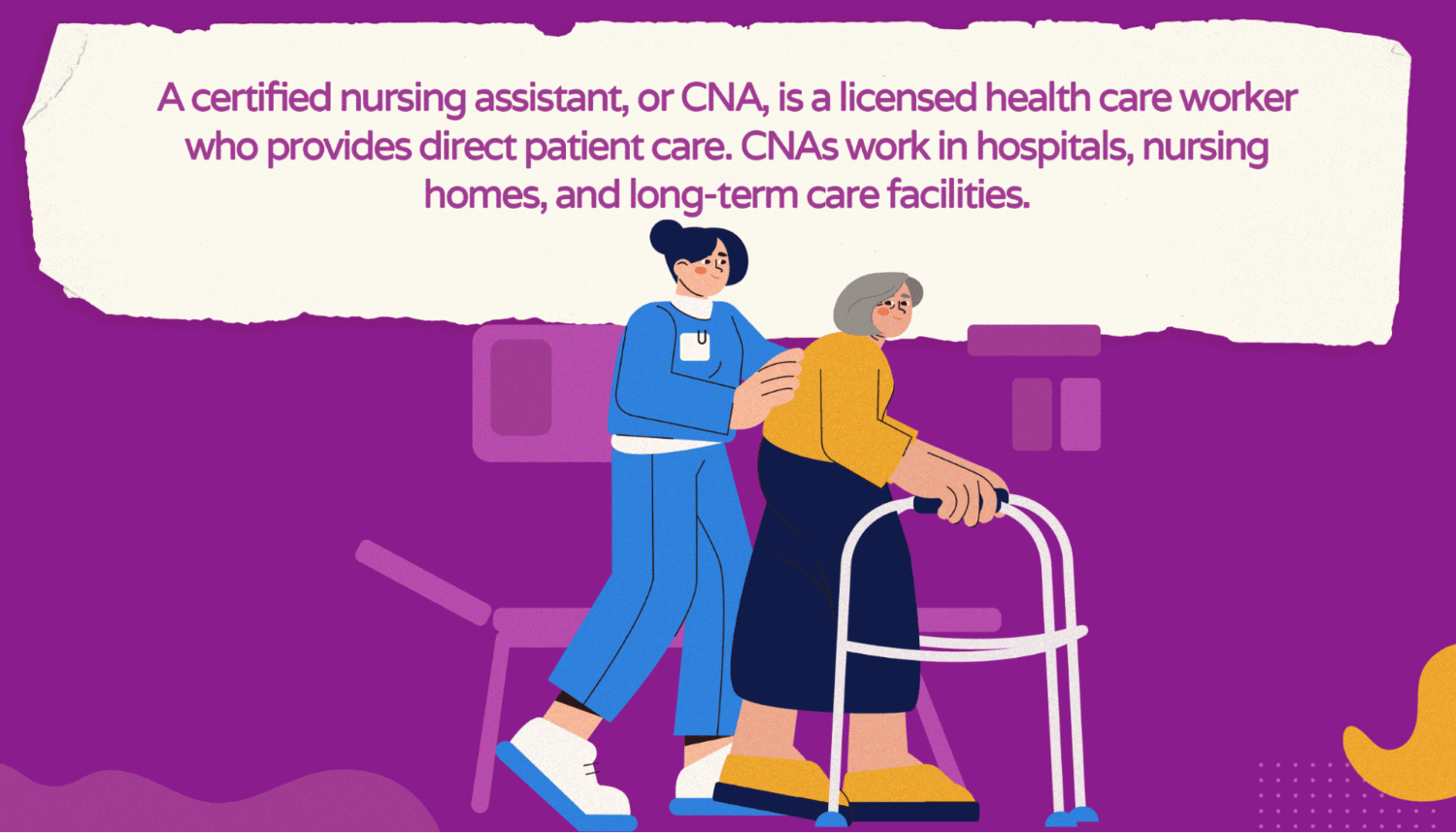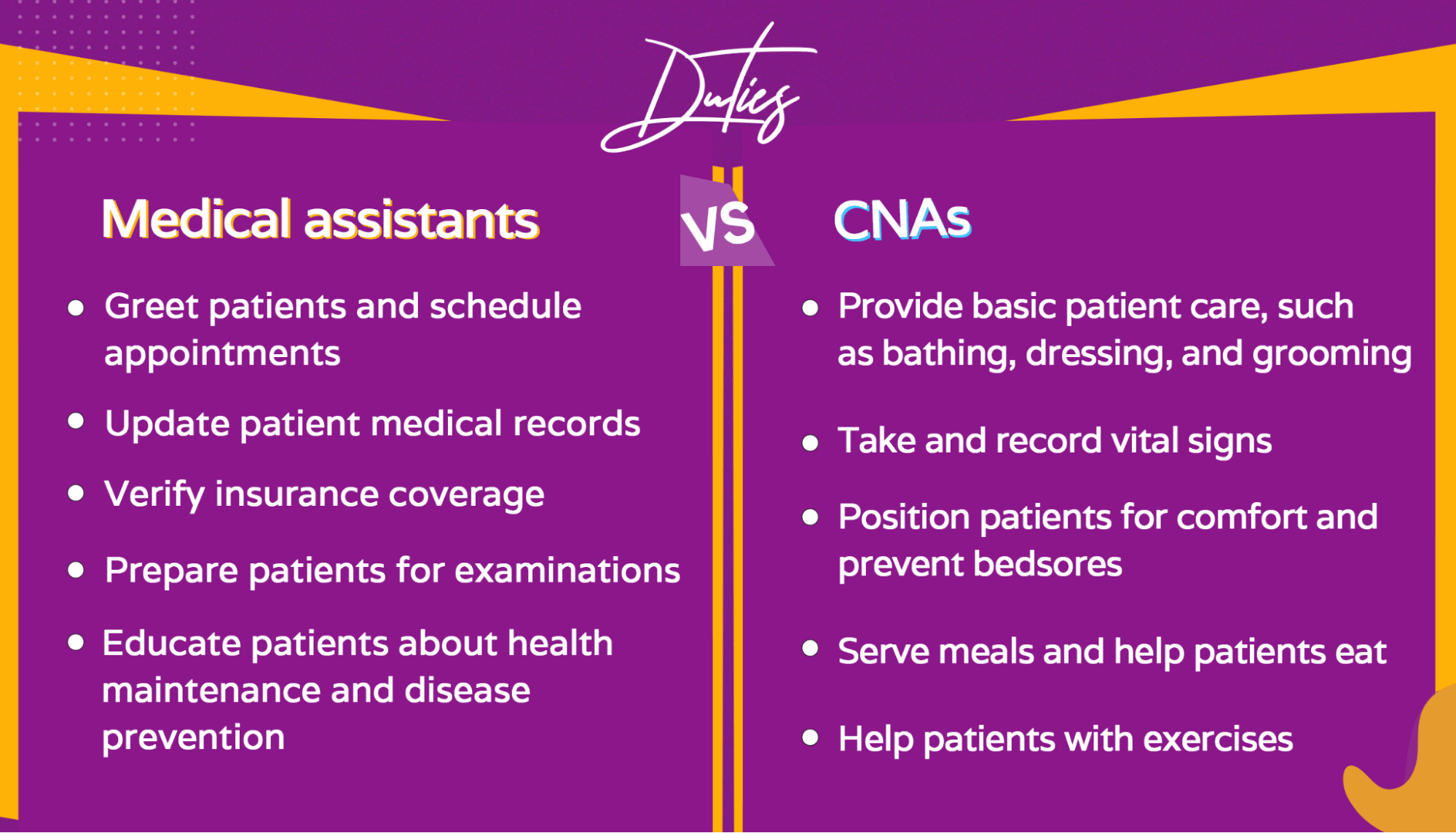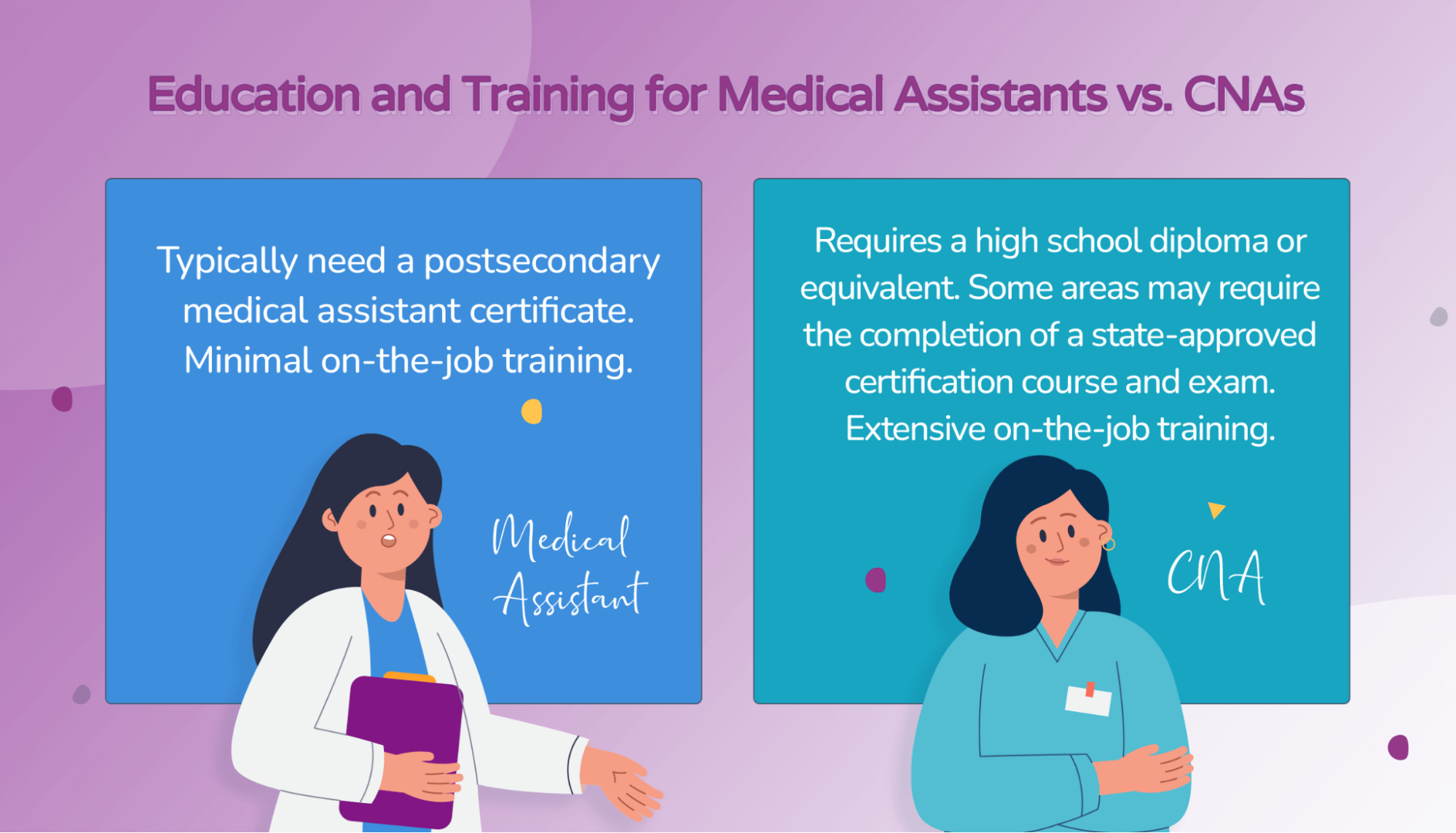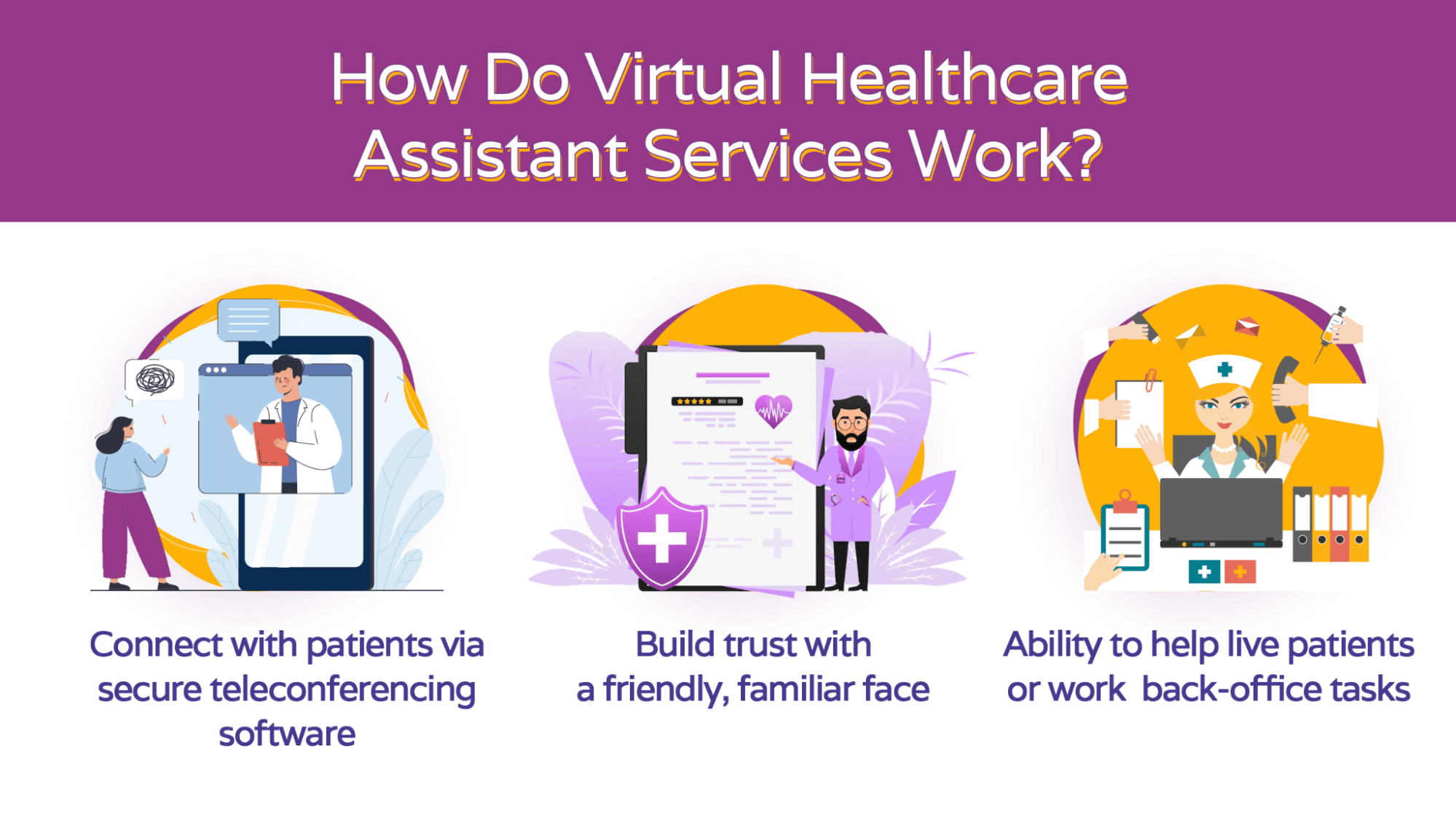Are you struggling to manage the various tasks required to keep your medical practice running smoothly? If so, you're not alone.
Many physicians find themselves in this position and ultimately hire a medical assistant or certified nursing assistant (CNA) to help with the day-to-day operations. But which is the best option for your unique business and patients?
This article will explore the differences between medical assistants and CNAs, the types of tasks these roles typically perform, and important facts about these professionals. By the end, you'll have a better idea of which option is best for your medical practice.
What is a medical assistant?
A medical assistant is a multi-skilled health professional who works alongside physicians in outpatient or urgent care centers to perform various administrative and clinical tasks. Medical assistants are not licensed or certified healthcare workers and do not have the same scope of practice as CNAs and other licensed professionals.
Most medical assistants have completed a postsecondary medical assistant program, which typically takes about one year to finish. Some states require these assistants to be formally registered, but this is not always mandatory. The role of a medical assistant is ideal for those who want to join the medical field but do not want to commit to a long and expensive education.
This type of role requires excellent organizational and communication skills and the ability to multitask and remain calm under pressure. Medical assistants must be able to keep track of patients' medical histories, schedule appointments, handle insurance paperwork, and maintain both digital and paper records.

Struggling to keep up with administrative tasks? Learn how a virtual assistant from Hello Rache can help you manage your medical practice, so you can focus more on providing quality care to your patients.
What is a CNA?
A certified nursing assistant (CNA) is a nurse who works in an extended care center, such as a care retirement community or residential care facility. CNAs provide basic patient care, such as bathing, dressing, and feeding. They also take vital signs such as blood pressure and body temperature and document patients' medical histories.
A CNA is typically more hands-on than a medical assistant, as they’re responsible for providing direct patient care. While most CNAs work in long-term environments, some work in hospitals or doctor's offices.
CNAs must have excellent communication skills and be able to function well under pressure. They must be able to follow instructions from licensed nurses and take directions from physicians. Furthermore, they need to have strong observational skills to document changes in patients' conditions.
It's crucial for medical business owners to understand the key differences between medical assistants and CNAs before making a decision about which is best for their needs. With the rise of virtual assistants, many of the tasks typically completed by medical assistants and CNAs can now be completed virtually.
Is a medical assistant the same as a CNA?
While many assume these two roles are the same, there are several key differences between medical assistants and CNAs. Perhaps the most significant difference is their working environment and the tasks they perform.
Medical assistants typically work in outpatient care centers, such as physician's offices and clinics, while CNAs usually work in long-term care centers, such as nursing homes and skilled nursing facilities. This means their patients are different.
Medical assistants generally work with patients who are relatively healthy and don't require constant care, while CNAs work with patients who require more hands-on assistance with the activities of their daily lives.

A medical assistant is usually the best option for outpatient settings, like dermatology offices, family practices, and chiropractic clinics. These medical businesses see a high volume of patients and require staff who are able to handle a fast-paced environment. A medical assistant's tasks include handling insurance paperwork, scheduling appointments, and ensuring that patients have a great experience from start to finish.
Medical assistant vs. CNA: duties and responsibilities
The duties and responsibilities of medical assistants and CNAs vary depending on the type of medical facility they provide services for and their patient load. However, some key job duties and responsibilities are typically associated with each profession.
Medical assistants
Greet patients and schedule appointments
With the ever-increasing demand for healthcare services, the number of patients seeking medical care has also increased. As a result, medical assistants play an important role in greeting patients and scheduling appointments. This ensures that each patient is seen in a timely manner and that the office runs smoothly.
Update patient medical records
Medical assistants are responsible for maintaining accurate and up-to-date electronic health records. This includes updating patients' insurance information, documenting their vital signs, and helping with scribe duties during patient examinations.
Verify insurance coverage
To ensure that patients receive the high-quality care they need, medical assistants must verify their insurance coverage. This includes checking for pre-authorizations, understanding benefits and limitations, and billing for services rendered.
Having a dedicated virtual medical assistant to help with these administrative tasks can free up time for physicians to provide good patient care and minimize doctor's office expenses.
Other medical assistant job duties include:
- Preparing patients for examinations
- Educating patients about health maintenance
- Data entry
- Transcribing patient encounters

Certified nursing assistants
Direct patient care
One of the main tasks CNAs perform is direct patient care. This includes activities such as bathing and dressing patients. CNAs often work in teams to provide the best possible care for their patients.
Vital signs
CNAs also take and record vital signs. This includes checking blood pressure, temperature, and respiration rate. CNAs also document changes in patients' conditions. Whether they're working virtually or in person, recording accurate vital signs is essential to a CNA's job.
Bedside care
CNAs also provide bedside care for their patients. This includes turning or repositioning patients who are bedridden, as well as serving meals and helping patients eat. CNAs also help patients with exercises and other activities prescribed by their physicians.
Other medical assistant job duties include:
- Turning or repositioning bedridden patients
- Providing emotional support to patients and families
- Observing patients for changes in condition
- Reporting changes to the supervising nurse
There are numerous differences between medical assistants and CNAs, from the type of basic care they provide to the setting in which they work. However, both roles are essential to providing quality patient care.
When choosing between a medical assistant and a CNA, it's important to consider the needs of your specific medical practice. A virtual assistant would benefit those practices that want to minimize the time spent on administrative tasks while improving their work-life balance.
Medical assistant vs. CNA: education and training
If you're a medical provider who needs to find a balance between the demands of your job, consider the educational requirements for these roles. Your medical assistant or certified nursing assistant is the one who will handle many of the crucial but time-consuming tasks, so you need to make sure you're hiring someone with the experience needed for your specific practice.

Medical assistants must have a high school diploma or GED. However, some jobs may also require postsecondary education. During their training, these professionals learn crucial subjects like medical terminology, which makes data entry and accurate charting possible. They also learn how to take and record vital signs, as well as how to handle basic medical documentation. Many medical assistants complete a certified medical assistant (CMA) program, which can take up to a year to finish.
On the other hand, certified nursing assistants must complete a state-approved education and training program, which typically takes two to six weeks. This intensive program covers topics like infection control, residents' rights, and how to provide personal care. After completing their training requirements, CNAs must pass a state-administered certification exam before they can begin working. This is because this field emphasizes providing quality care to patients.
So, which is the right fit for your medical practice?
It depends on a wide variety of factors, including the size of your practice and the types of patients you see. Try to imagine what your ideal assistant would be capable of, and then use that to guide your decision.
Hello Rache has a wide selection of HIPAA-compliant virtual assistants who are experienced in the medical field and ready to help with everything from greeting patients via teleconferencing software to working on back-end tasks.
Salary and demand for medical assistants vs. CNAs
If you're looking for a virtual medical assistant for your office, it's crucial to understand the demand and average salary for these positions. Having a complete picture of how other businesses in your industry are hiring will help you make the best decision for your needs.

The BLS predicts that the number of medical assistant jobs will grow much quicker than the average for all occupations through 2030, at a rate of 16%. This equates to roughly 12,300 new openings each year. This increased demand is due to the aging population and the resulting demand for preventive medical services. Additionally, physician offices across the country are starting to move toward a medical assistant model to handle the administrative side of their businesses.
The average salary for a medical assistant is $37,190 as of May 2021, which is slightly higher than the $30,310 national average for nursing aides. With most healthcare providers working long hours, it's important to have someone who can handle administrative tasks. That is where medical assistants shine, as they can take on a larger behind-the-scenes workload than traditional nursing aides.
Choosing between a medical assistant and a CNA
Many doctors, nurse practitioners, and registered nurses find themselves struggling to keep up with the administrative side of their jobs. From charting to scheduling appointments, a lot needs to be done to keep the office running smoothly. That is where a medical assistant or certified nursing assistant comes in. But how do you know which is the best choice for your practice?
A medical assistant is a great option if you need help in your outpatient office with patient correspondence, billing, and coding. Medical assistants are trained in basic medical office procedures and can take on more clinical tasks as well. Many medical assistants also provide virtual care to patients, which can be a great way to minimize costs.

When choosing a Healthcare Virtual Assistant from Hello Rache, you receive services at a set hourly rate of $9.50. Outsourcing medical office tasks to a certified medical assistant can help you save on administrative costs while still providing patient care that meets the highest standards.
Your overhead is one of the biggest expenses for your medical practice. When you outsource to Hello Rache, you only pay for the services you need when you need them. There are no long-term contracts or additional fees — just quality care for your patients.
Find a medical assistant or CNA today
Though the demand for medical assistants is high, many healthcare providers are still unsure of what they do. In short, a medical assistant is someone who provides quality care to patients while assisting in the administrative side of a medical office. They’re often HIPAA-compliant and have experience in the medical field. Outsourcing your practice's administrative tasks to a virtual medical assistant can help you save on costs while still providing quality patient care.
If you're looking for a certified medical assistant, look no further than Hello Rache. Contact us directly for a consultation on our virtual medical assistant services.




